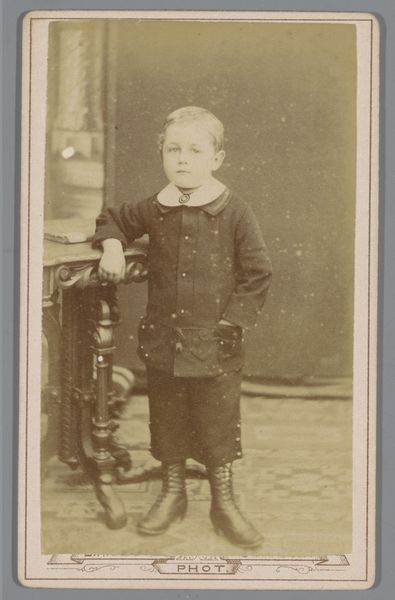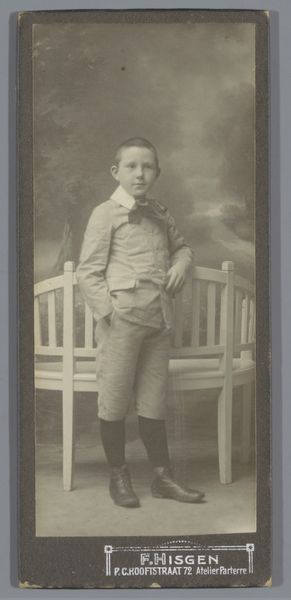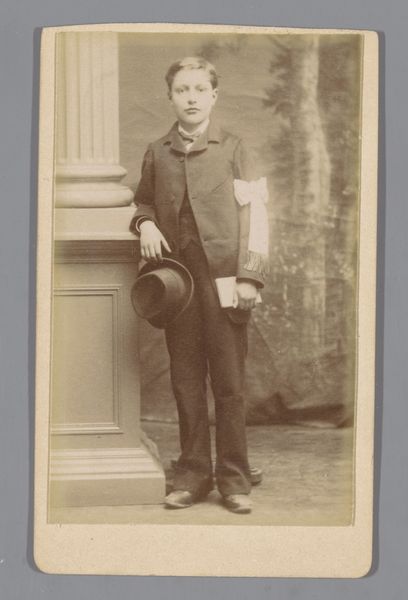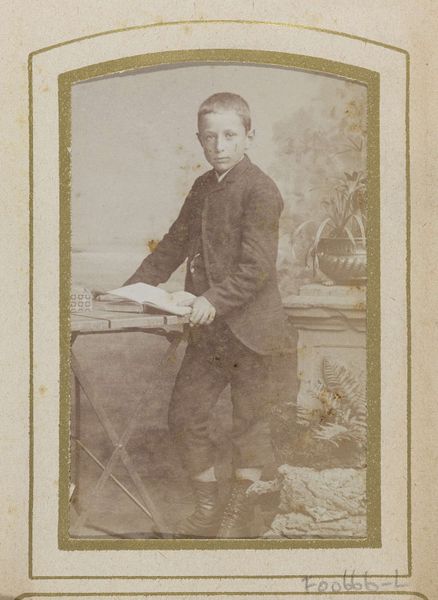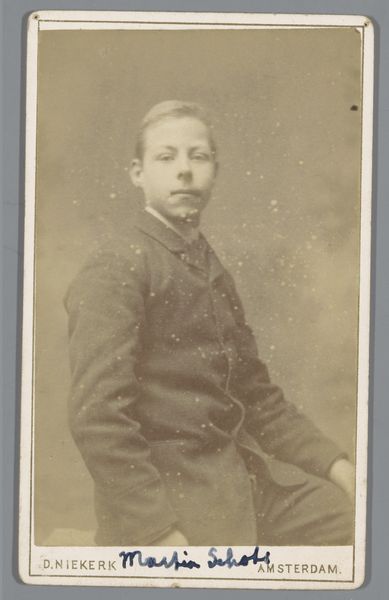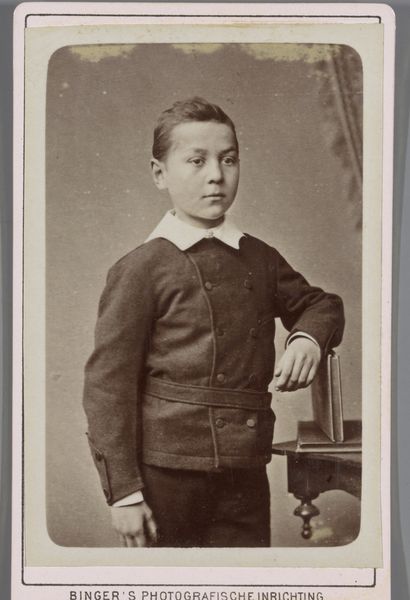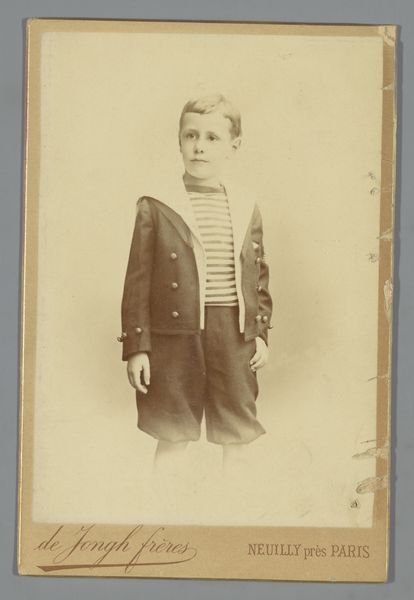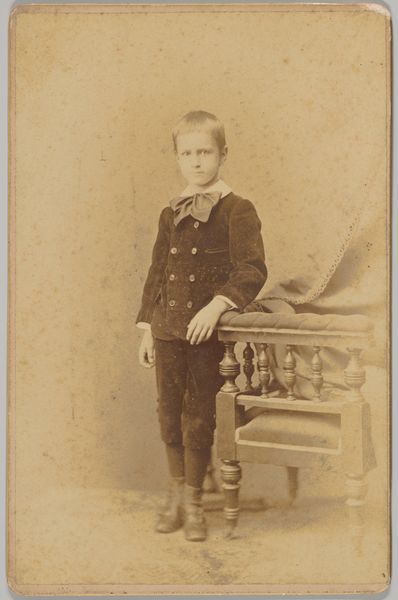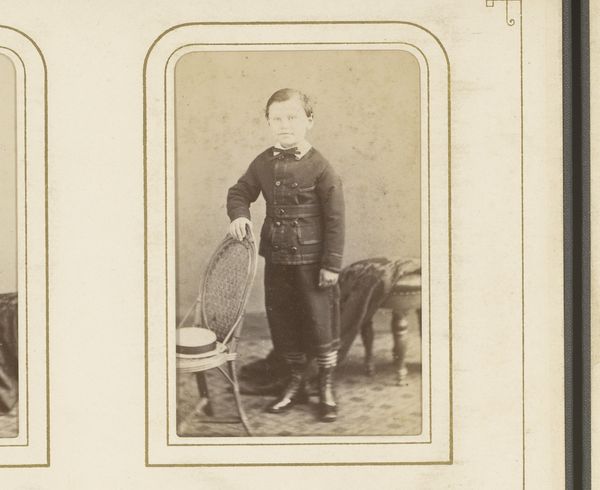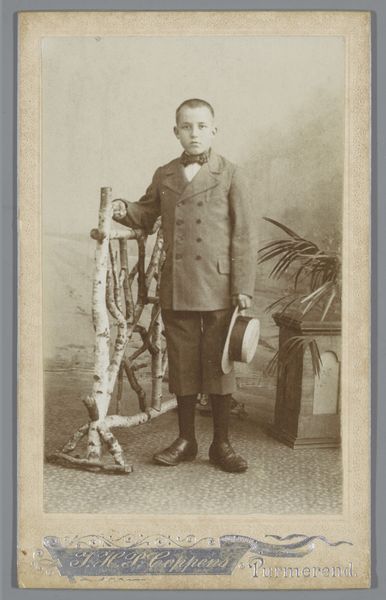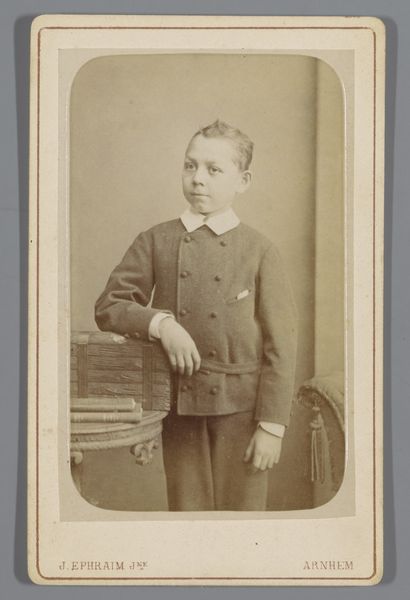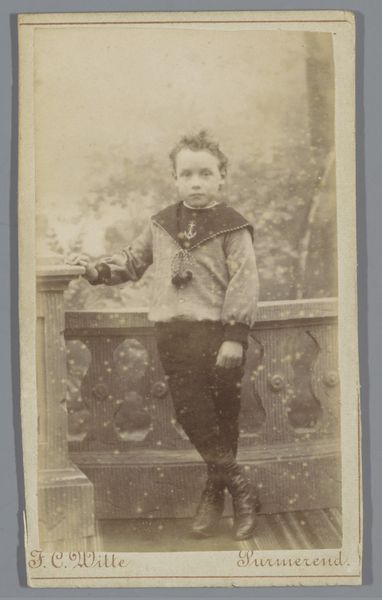
Portret van jonkheer Aneas Mackay met rijglaarzen en een kuitbroek 1883
0:00
0:00
daguerreotype, photography
#
daguerreotype
#
photography
#
historical photography
#
19th century
#
realism
Dimensions: height 89 mm, width 56 mm, height 62 mm, width 103 mm
Copyright: Rijks Museum: Open Domain
Curator: So, here we have a portrait of jonkheer Aneas Mackay, taken in 1883 by Willem Carel Heijenberg. It's a striking daguerreotype, one of the earliest forms of photography. Editor: The overall mood is serious, reserved. He’s very small, looking like a tiny old man in those boots and with the serious gaze... He seems quite trapped by the gravity of whatever expectations sit on his narrow shoulders. Curator: Interesting! Those rijglaarzen – those laced boots – are quite the statement, aren’t they? And that kuitbroek, or breeches... it tells you about status, the young man's position. But yes, I see what you mean; his stillness contrasts sharply with childhood ideals of energy and adventure. Editor: Exactly. There's this box he is using as a support to stay put, and which visually anchors him to the earth. What does this compositional choice express? He is pressed and preserved as if frozen in time. Curator: Absolutely. The very medium, a daguerreotype, involved a lengthy exposure, so he would have had to stay incredibly still. That’s partly why early photographs often seem so solemn. It's also a moment captured—a preserved, perhaps idealized, version of this boy at that time. Almost ghostly, wouldn’t you say, even given the clarity of the image? Editor: A very evocative point. The imperfections—almost like snowflakes—create an ethereal feeling. Looking closely at this portrait, I can appreciate how Heijenberg captured Aneas both as an individual and as a symbol of his class. Curator: Well said. This photograph provides us not just a portrait but also with a fascinating little window into the past. A tangible echo of 19th century social dynamics and its fascinating portraiture style! Editor: Indeed, and a poignant reminder of how photography allows us to touch moments that would otherwise be lost entirely to time. A very neat example of the eternal appeal of capturing the fleeting.
Comments
No comments
Be the first to comment and join the conversation on the ultimate creative platform.
